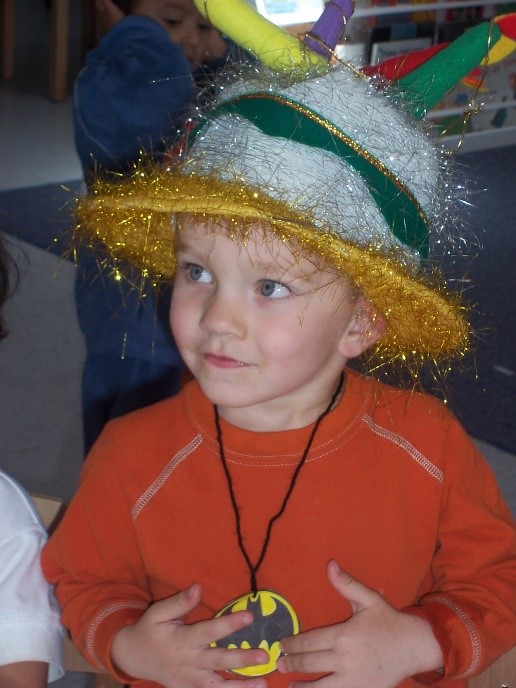A Star That Helps Point the Way Toward a Cure for Childhood Cancer
Posted on byBy Danielle Leach
Chief of Community and Government Relations at the National Brain Tumor Society

Childhood cancer entered my life in the fifth grade when my sister was diagnosed with rhabdomyosarcoma, a rare type of cancer that forms in soft tissue, at age 13. I watched the harsh impact on her life, and that experience guided my career as a cancer advocate.
My son, Mason, was a soccer star, an artist, a superhero, and a stubborn, sweet, loving little boy. He loved his brother, soccer, and rock music. He was diagnosed at age 3 with disseminated medulloblastoma, a type of brain cancer. He endured brain surgery and screamed in confusion for 24 hours afterward. At first, he lost his abilities to walk and talk, but he worked hard to recover them.
Mason endured more than 9 months of chemotherapy and stem cell transplants. He went on a clinical trial when doctors ran out of options. Mason was a little boy who wanted nothing more than to play with his brother, go to school, and be a regular kid. Cancer robbed Mason of that, and he died at age 5 in 2007.
At the time of Mason’s diagnosis in 2006, I was shocked by how slow the progress on treatments for childhood cancer had been since my sister was diagnosed in 1981. The options were not much different. I learned that brain tumors are the number one reason children die from cancer before the age of 14. I also learned about a strong childhood cancer advocacy community that had been working tirelessly for years to change that reality, and I soon became a part of that community.
STAR Act Helps Find Cures Faster

The STAR Act was crafted by parents, doctors, and organizations who strive to make a difference for children with cancer and their families, in partnership with legislators and others. Many of us could not change the outcomes for our own children. We lived the reality of hearing there were no options left. We had to watch our children suffer and die not only from cancer, but also from the side effects of the treatments they endured. That’s why we were determined to make a difference to create cures and improve childhood cancer patients’ quality of life.
When the STAR Act was being written, I was the co-chair for the Alliance for Childhood Cancer. I helped lead the strategy for the STAR Act’s passage and funding. Thousands of phone calls, social media posts, and meetings took place to make the STAR Act a reality. In my current role as Chief of Community and Government Relations at the National Brain Tumor Society, I still drive this kind of advocacy in honor of all the children who have died, the survivors, and those yet to be diagnosed.
Information about children with cancer is critical to understanding this disease. Every data point is more than a statistic—it is a child with a story, a family, and a community that wants desperately to understand why this happened and how to stop it from happening again. My Mason was so much more than what his cancer journey and statistics told. His story—and every child’s story—should be a star that helps point the way toward a cure.
One of my favorite photos of Mason sums up his personality and attitude about his cancer perfectly. It’s from a childhood cancer race we did about a month before his death. He was wobbly from his tumor growth and puffy from steroids. He stood on the starting line determined to win the race. He got knocked down very close to the start. With his knee bloody, he got up, asked for our help, and finished the race.
It has been an honor to serve on the advisory group for the STAR Act. Much like Mason, the advisory group is determined, asking for help, and working through challenges. I look forward to seeing this project improve the lives of childhood cancer patients.
Posted on by

